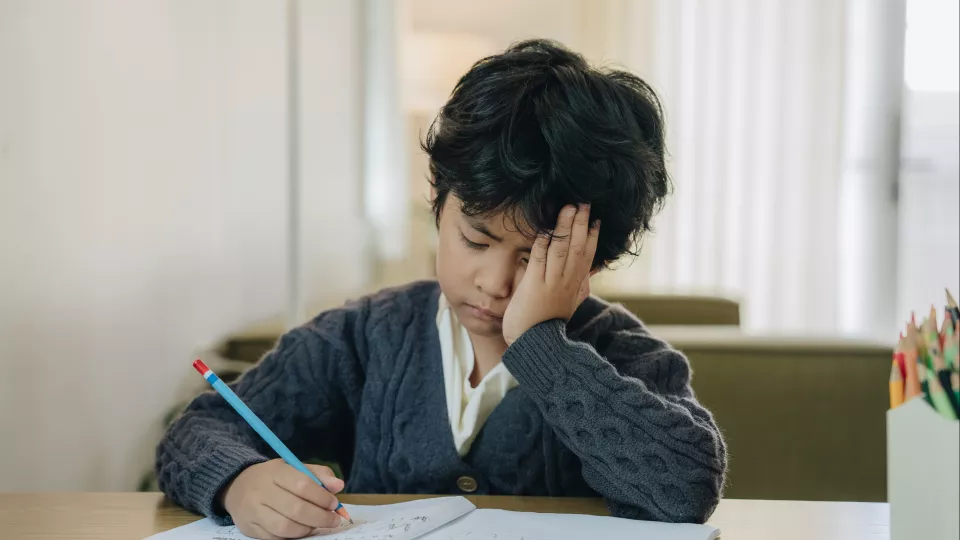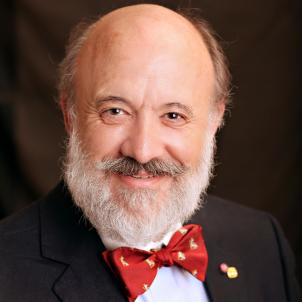
CHLA Researchers Report How Long-Covid Symptoms Differ Between Elementary School-age Children and Adolescents
The debilitating symptoms of post-acute sequelae of SARS-CoV-2 (PASC)—known as long COVID—can last up to months or years after COVID-19 infection resolves. But exactly how long COVID affects children is not well-understood. Inconsistent assessment of long-COVID symptoms in children has so far hindered the urgent search for underlying disease mechanisms and treatment targets.

Researchers at Children’s Hospital Los Angeles and their collaborators in a nationwide study report that they have identified the most common long-COVID symptoms experienced by children ages 6 to 17 years old—and that they can objectively distinguish these symptoms by age. CHLA is one of the pediatric sites collaborating in the Researching COVID to Enhance Recovery (RECOVER) initiative, sponsored by the National Institutes of Health. As part of this initiative, the ongoing Pediatric Observational Cohort Study (RECOVER-Pediatrics), studied 898 school-age children (751 infected with COVID-19, 147 uninfected) and 4,469 adolescents (3,109 infected, 1,360 uninfected) from 60 different sites across the United States.
“This study demonstrates the importance of characterizing long COVID across childhood,” says John Wood, MD, PhD, Investigator, Cardiology at Children’s Hospital Los Angeles and study co-author. “Children who experienced prolonged symptoms after SARS-CoV-2 infection were affected in almost every organ system, with the vast majority having multisystem involvement. This impact is significant, as up to 6 million children in the U.S. have long COVID.”
Assessing symptoms
RECOVER-Pediatrics collected data from two groups; the RECOVER cohort, including youth from birth through 25 years of age, with and without SARS-CoV-2 infection history; and the NIH-funded Adolescent Brain Cognitive Development (ABCD) study, the largest long-term U.S. study of brain development in adolescence. CHLA has enrolled about 600 patients, newborns up to age 17, from the community and its Long COVID Recovery Care Clinic over the past two years.

“We are finding that the type of long-COVID symptoms in children differ significantly from those of adults, and symptom patterns differ between children and adolescents by age group,” says Sindhu Mohandas, MD, Director, Long COVID Recovery Care Clinic at CHLA, and study co-author.
Researchers found 18 symptoms in children 6 to 11 years old and 17 symptoms in adolescents 12 to 17 years old that were more common in those with a history of SARS-CoV-2 infection compared to those without, with 14 symptoms that overlapped between age groups. Using models adjusted for sex and race/ethnicity, the researchers found four different long-COVID symptom clusters in elementary school-age children and three in adolescents.
The most common symptoms indicating the likelihood of long COVID among school-age children were headache (57%), followed by trouble with memory/focusing and trouble sleeping (44%), and stomach pain (43%).
- Among adolescents with long COVID, the most common predictive symptoms were daytime tiredness/sleepiness or low energy (80%); body, muscle or joint pain (60%); headache (55%); and trouble with memory or focusing (47%).
“We find that about 80% of patients improve—but about 20% get worse,” says David Warburton, OBE, MD, Pasadena Guild Chair in Developmental Biology and Regenerative Medicine at CHLA, and study co-author. “There is no magic bullet for the long-standing inflammatory process that underlies long COVID. But we can address the symptoms, as long as we know what they are.”
Building a long-COVID research index

Using the study data, the researchers developed an objective index—the higher the number, the greater the chances of long COVID. As this index is intended as a research tool, it will require more validation to be ready for use in the clinic.
- According to the index, about 20% of infected elementary school-age children exceeded the threshold for having long-COVID symptoms, as well as 14% of adolescents tested.
- Among elementary school-age children, 9% met the long-COVID research index and 28% reported experiencing at least one prolonged symptom.
- Among adolescents, 4% met the index threshold and 175 (22%) reported at least one prolonged symptom.
“We want to identify if these symptom clusters are associated with different disease processes, which is critical for identifying potential treatments for pediatric clinical trials,” says Dr. Mohandas. “We plan to recruit more severely affected kids into the study as a next step, as well as children younger than 6 years old who were never infected.”
The RECOVER-Pediatrics study findings, “Long-Covid Symptoms in School-Age Children and Adolescents: A RECOVER Pediatric Observational Study,” were published in JAMA.
About RECOVER: The National Institutes of Health Researching COVID to Enhance Recovery (NIH RECOVER) Initiative brings together clinicians, scientists, caregivers, patients, and community members to understand, diagnose, and treat long COVID. RECOVER has created one of the largest and most diverse groups of Long COVID study participants in the world. In addition, RECOVER clinical trials are testing potential interventions across five symptom focus areas. For more information, please visit recoverCOVID.org.